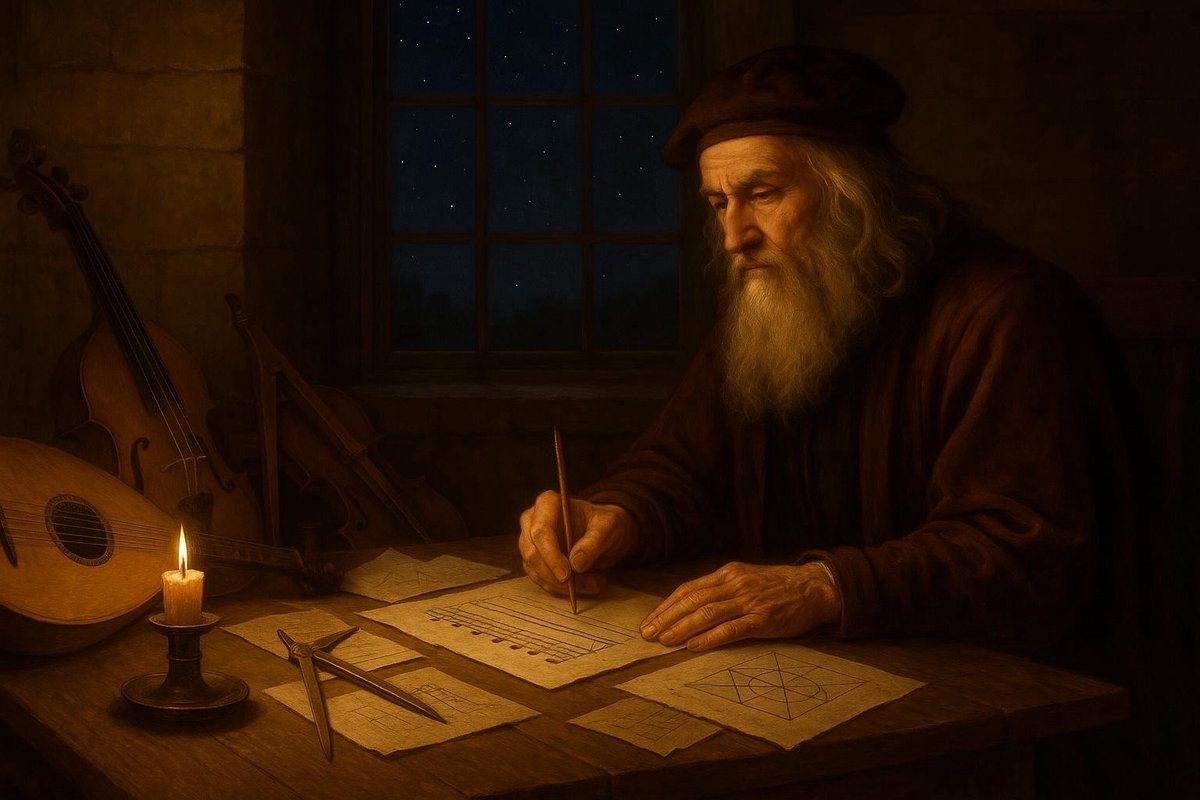
Introduction
Have you ever marveled at how music can stir the soul? Interestingly, beneath the surging melodies and harmonies lies a bedrock of mathematics. This interplay between the numeric and the melodic might seem unexpected, yet it has unraveled profound insights across disciplines. Today, we delve into this melodic math to uncover surprising connections between science, art, and philosophy.
Origin: The Mathematical Roots of Music
Long before the digital age, ancient Greeks like Pythagoras were entranced by the notion of harmony. Pythagoras, around 500 BC, discovered that musical intervals could be expressed through simple ratios. This revelation was no mere coincidence but rather a testament to the profound integration of mathematics within the arts.
- Pythagoras identified that strings of different lengths could produce harmonious sounds when their lengths were proportional.
- This observation laid the foundation for the harmonic series and shaped Western musical theory.
Before this discovery, music was often seen as purely artistic. However, Pythagoras’ insight bridged the gap between the empirical and the imaginative. The cultural milieu of ancient Greece, steeped in philosophy and inquiry, provided fertile ground for such revelations. The Greeks’ fascination with patterns and order catalyzed this blend of music and math, setting the stage for future explorations.
Key Figures: Bridging Math and Music
Fast forward to the Renaissance, and we meet figures like Leonardo da Vinci and Johannes Kepler who continued this tradition of blending art and science. Kepler, with his work Harmonices Mundi, sought to explain the cosmos through musical harmony and mathematical precision.
- Leonardo da Vinci explored the mathematical proportions of the human body, which inspired the rhythm in art and architecture.
- Kepler believed that the planets moved in a celestial symphony, defined by mathematical laws.
These polymaths blurred the lines between disciplines, believing that music, mathematics, and the cosmos were inherently interconnected. Their work was a continuation of the Greek legacy, but it also reflected the cultural rebirth of the Renaissance, a period that celebrated the confluence of knowledge and creativity.
Turning Point: The Digital Revolution
As time progressed, the digital era heralded a new turning point. Computation and algorithms revolutionized music production, further cementing the role of mathematics. In the late 20th century, researchers and musicians began using computers to explore soundscapes unimaginable in the past.
- Electronic music genres like ambient and techno utilize algorithmic processes to create intricate sound patterns.
- Musicians like Brian Eno and artists like Kraftwerk embraced technology to push musical boundaries.
This era redefined both music and mathematics, as algorithms began creating art. In this digital age, the synthesis of math and music became more accessible, enabling anyone with a computer to engage in this age-old dialogue. This shift reflected the growing interdependence of technology and human creativity in a modern context.
Impact on the World: Music, Math, and Beyond
Today, we witness the profound impact of this interdisciplinary synergy. Music therapy, for instance, uses rhythmic patterns to aid cognitive and emotional healing, highlighting the therapeutic potential of harmonious structures.
- The music streaming industry relies on algorithms to analyze and predict user preferences.
- Mathematics aids in creating immersive virtual sound experiences in fields like gaming and virtual reality.
These developments exemplify how the dance of numbers and notes transcends boundaries, touching lives in unexpected ways. It is a testament to how interconnected our world has become, with disciplines enriching each other to solve complex problems and enhance human experience.
Conclusion
The intricate choreography between mathematics and music continues to inspire. As long as we listen, we will find echoes of this ancient connection in the rhythms of our lives. The legacy of those who bridged these worlds endures, inviting us to explore further and cherish the harmony between numbers and melodies.
Fuel Someone Else’s Curiosity
If this exploration piqued your interest, why not share it with a friend? Encourage them to discover the hidden symphony of math and music. After all, curiosity is a melody best experienced together.

Leave a Reply